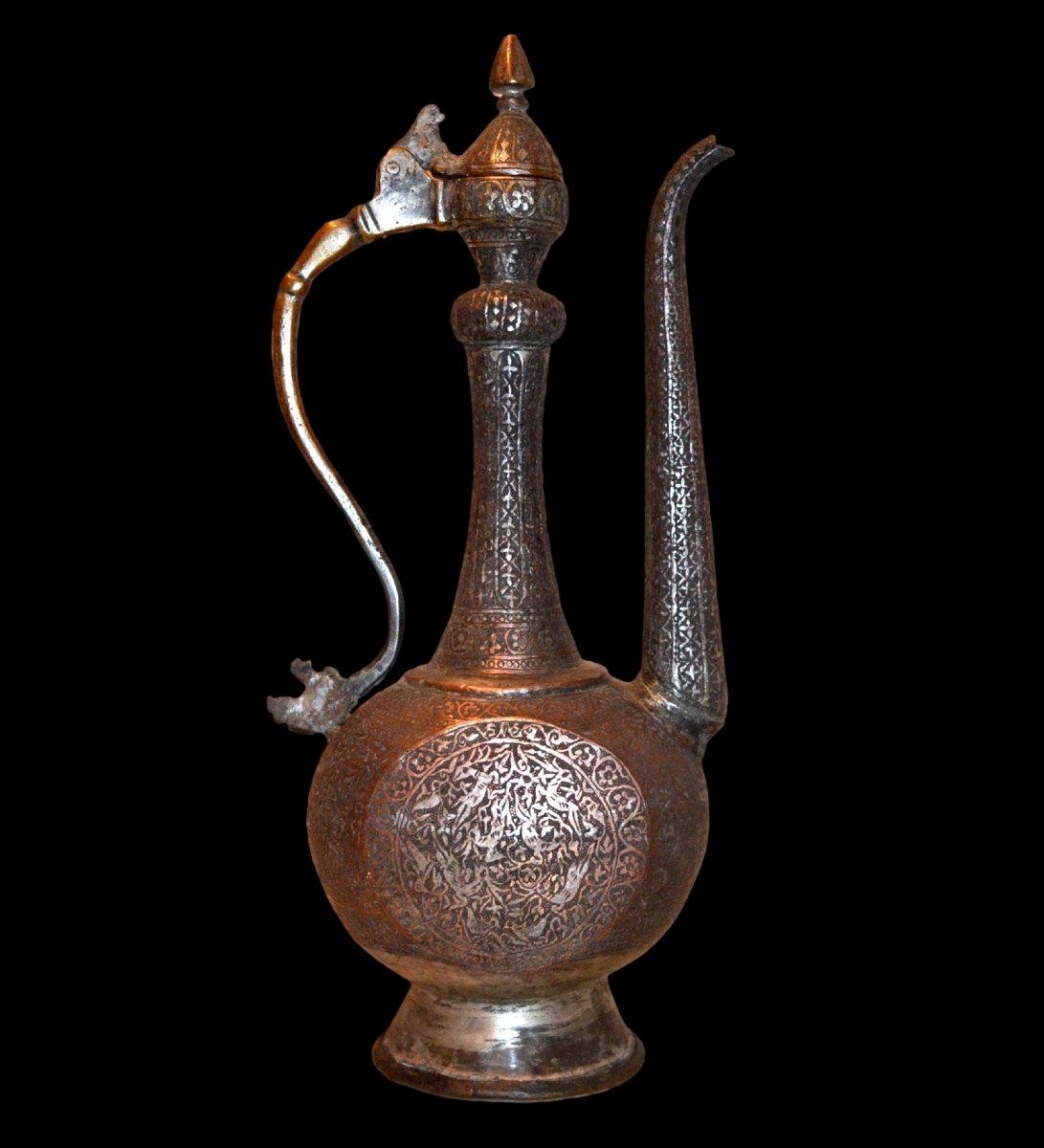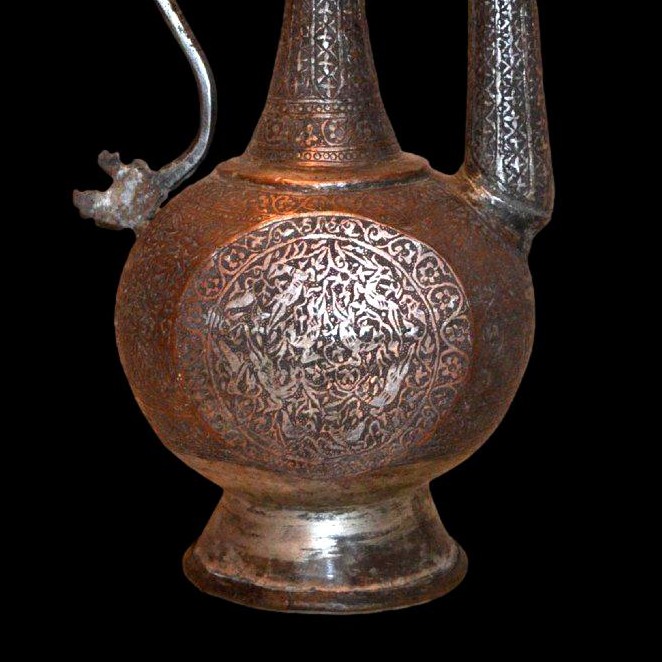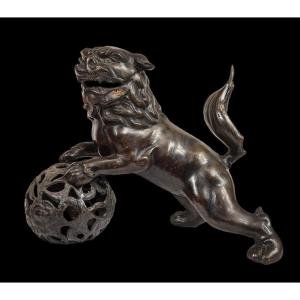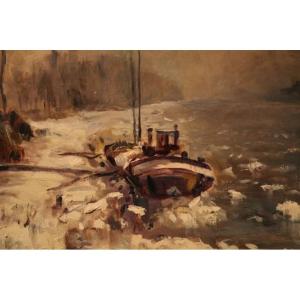Engraved on both sides of the medallions (see photos) are the dancing deer, an animal found in regional iconography since time immemorial (sculptures from Luristan, the Caucasus, and the Scythians).
Our example comes from northwestern Persia, eastern Iran, and Azerbaijan.
A cast bronze handle, beautiful engravings, and a patina acquired over time enhance the object.
The stopper, shaped like a dominion, supports a faceted finial. Note the numerous floral facets forming the neck.
The presence of many deer, birds, and interlacing roses and ivy is also noteworthy.
The spout is very beautiful and multifaceted, as is the neck.
The object is of particular interest due to its decoration.
This ewer or jug Aftafa was, and still is today, primarily used for ablutions, washing the face and hands, during religious ceremonies.
"The festival of the initiates, standing ready to serve, the beauties from all sides hold the ewer in their hands; the lovers wash their hands with all their soul; while the beauties pour the water, ewer in hand."
(Reading and translation, AS Melikian-Chirvani, 1973, p. 119).
This 19th-century ewer is in very fine collector's condition. Ewers are emblematic and among the finest objects of ancient Oriental art; they are all different because they were all special commissions.
Dimensions: Height: 44 cm (17") - Width: 22 cm (9") - Weight: 1830 grams.
We present other antique ewers from various origins in our WINSTEIN gallery on Proantic.
FREE SHIPPING WITHIN FRANCE via Colissimo €0 / €25 €50 / WORLD
For more information you can contact me at 06 13 36 09 30
or at winsteinprovence@gmail.com
www.winsteinprovence.com


















































 Le Magazine de PROANTIC
Le Magazine de PROANTIC TRÉSORS Magazine
TRÉSORS Magazine Rivista Artiquariato
Rivista Artiquariato